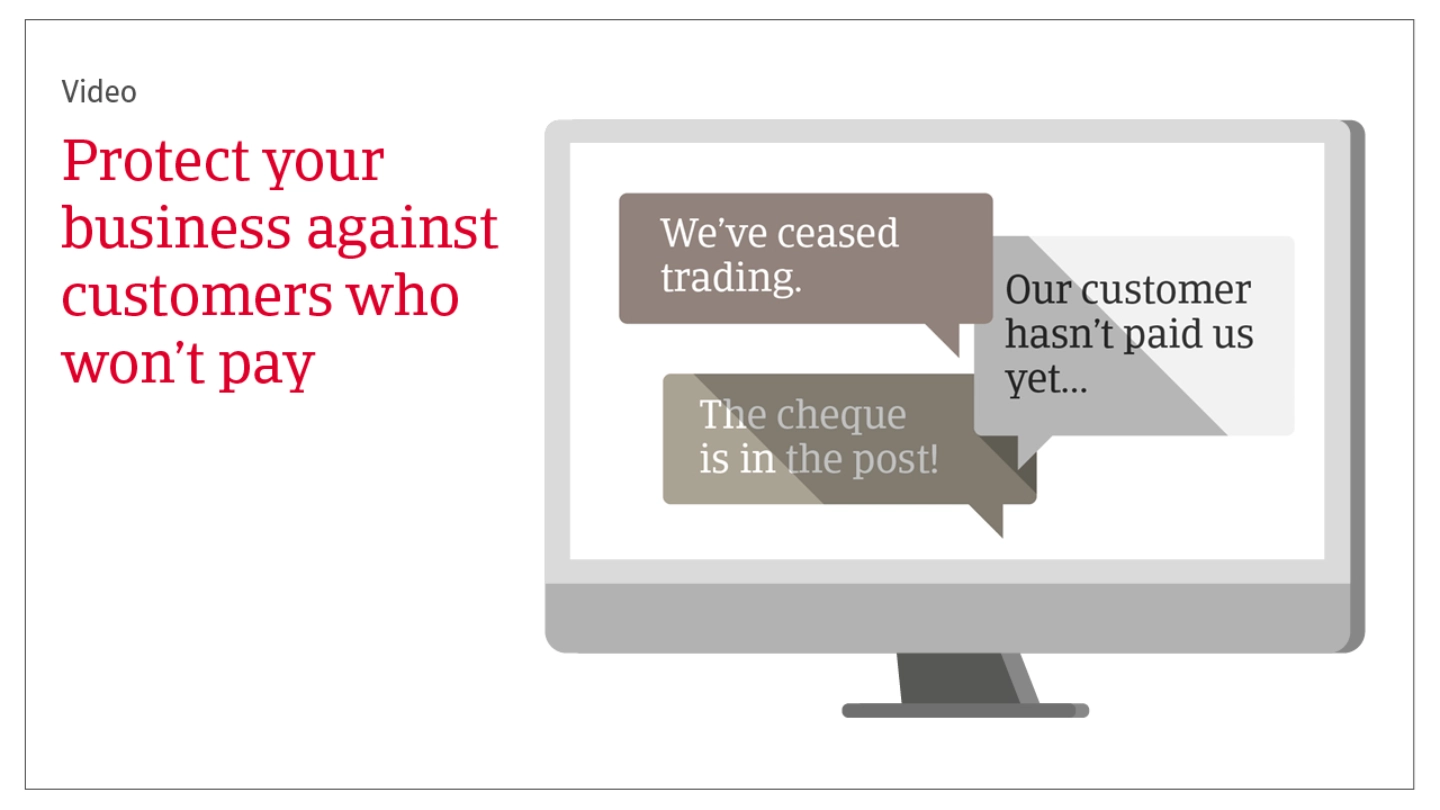

Trade credit insurance protects your business from bad debts. It insures your accounts receivable and protects your business from unpaid invoices caused by customer bankruptcy, political risks, or other specific reasons that you can agree with us.
Trade credit insurance is also sometimes known as debtor insurance, export credit insurance and accounts receivable insurance.

Step 1: We check the creditworthiness of your prospect or customer and let you know whether we insure your sales to them and if so, how much?
Step 2: You start trading and inform us regularly about your turnover with the insured customers. The frequency of the turnover declaration is defined in the contract.
Step 3: Not paid? In line with the contract we will normally first collect the debt via our collection service. If this not feasible, we will pay your claims based on the agreed policy conditions.

Pricing is based on a small percentage of your annual sales depending on a number of factors, such as:
Turnover
The premium is computed by multiplying the turnover by a premium rate, mostly below 0.5%.
Sector
Some sectors are more volatile, with risks reflected in premiums and closely monitored for changes.
Credit
Time allowed for your customers to make payment is factored into the premium.
Countries
Trading risks vary by country , and your premium reflects these differences.

- Grow your customer base: as potential buyers may be attracted to your credit terms
- Enhance trade: providing you with the confidence to develop and expand your market
- Support cashflow: enabling you to build strong relationships with your suppliers and employees
- Safeguard customer relationships: through improved communication and enhanced credit terms
- Improve your access to finance and your relationship with your bank
- Meet the risk management requirements of your stakeholders or board and provide peace of mind





One Credit Insurance policy, customised to your needs
To keep things simple, we offer a single policy: Modula. Within this policy is a range of modules to suit your needs.
Acting as ‘building blocks’ of coverage, this approach allows us to create a detailed, bespoke policy that reflects your specific trade exposures.
This flexibility is especially valuable when you need to cover different customers or markets with varying risks.
Modula enables clear identification and differentiation of risk levels between customers. By offering a single policy, we promote standardisation and clarity, while the individual modules provide a custom fit tailored to your unique requirements.
Additional benefits of our Modula system include:
- Consistency across markets and languages – Our multilingual underwriters and legal team ensure that your policy is clear and conveys the same meaning across all languages;
- Transparency – Your policy will only include conditions relevant to your needs, free from unnecessary jargon or irrelevant clauses;
- Easy online administration – Manage your policy directly through our online system, Atradius Atrium, where you can quickly establish credit lines, notify us of claims, track progress and make changes.
"Atradius helped us to grow our business step by step. We have provided a better service, been able to increase activity with old customers, and start business with new ones."
Easy account management
You can manage your daily policy activites and analyse your portfolio of your customers directly through our credit management hub - Atradius Atrium.

One policy, personalised options - Modula
Modula allows for varying levels of risk and need between customers to be clearly identified and differentiated. Providing a single policy promotes...
Contact us




































